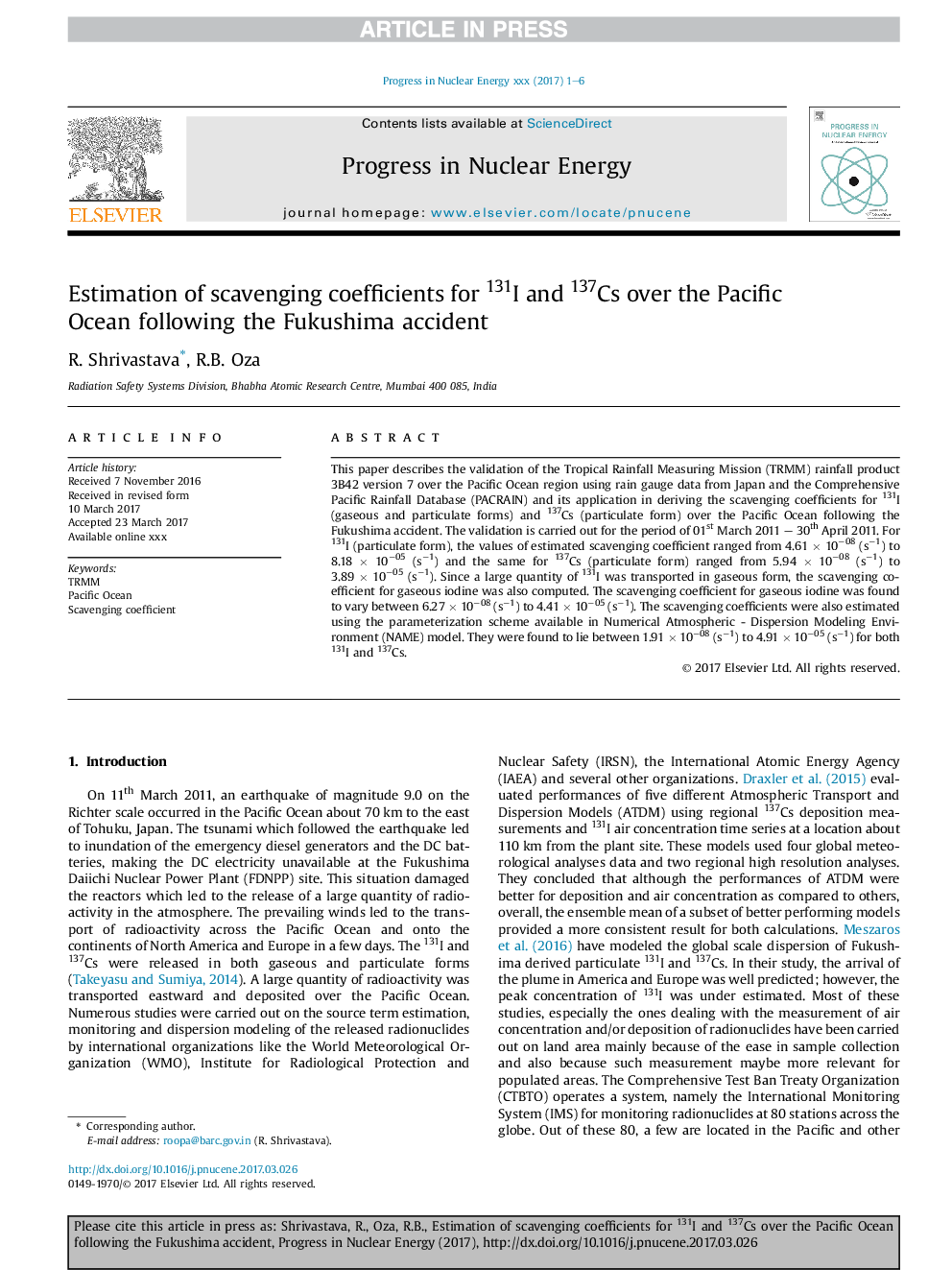| Article ID | Journal | Published Year | Pages | File Type |
|---|---|---|---|---|
| 5478062 | Progress in Nuclear Energy | 2017 | 6 Pages |
Abstract
This paper describes the validation of the Tropical Rainfall Measuring Mission (TRMM) rainfall product 3B42 version 7 over the Pacific Ocean region using rain gauge data from Japan and the Comprehensive Pacific Rainfall Database (PACRAIN) and its application in deriving the scavenging coefficients for 131I (gaseous and particulate forms) and 137Cs (particulate form) over the Pacific Ocean following the Fukushima accident. The validation is carried out for the period of 01st March 2011Â - 30th April 2011. For 131I (particulate form), the values of estimated scavenging coefficient ranged from 4.61Â ÃÂ 10â08 (sâ1) to 8.18Â ÃÂ 10â05 (sâ1) and the same for 137Cs (particulate form) ranged from 5.94Â ÃÂ 10â08 (sâ1) to 3.89Â ÃÂ 10â05 (sâ1). Since a large quantity of 131I was transported in gaseous form, the scavenging coefficient for gaseous iodine was also computed. The scavenging coefficient for gaseous iodine was found to vary between 6.27Â ÃÂ 10â08 (sâ1) to 4.41Â ÃÂ 10â05 (sâ1). The scavenging coefficients were also estimated using the parameterization scheme available in Numerical Atmospheric - Dispersion Modeling Environment (NAME) model. They were found to lie between 1.91Â ÃÂ 10â08 (sâ1) to 4.91Â ÃÂ 10â05 (sâ1) for both 131I and 137Cs.
Related Topics
Physical Sciences and Engineering
Energy
Energy Engineering and Power Technology
Authors
R. Shrivastava, R.B. Oza,
